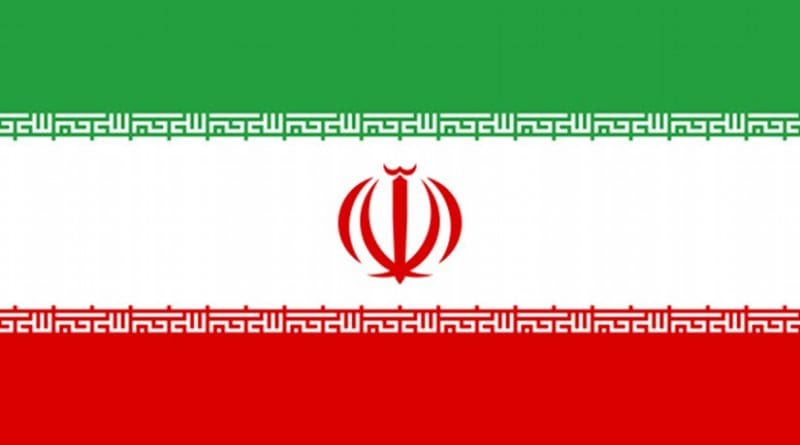Iran and the Expanding World Enrichment Programs – Analysis
One of the ironies of the current nuclear negotiations between Iran and the “5+1” nations is that the latter are united in their demand from Iran to curtail its uranium enrichment program precisely at a time when they themselves are expanding their own programs, reflecting a broader trend in the world profile of uranium enrichment plant operations driven by commercial and economic interests.
This, of course, makes a perfect case for legal discrimination against Iran, which has a comparatively small enrichment program under full-scope IAEA inspections, which has repeatedly, including in its latest November 2014 Safeguard Report on Iran, confirmed the absence of any evidence of diversion from peaceful nuclear work.
The lame excuse for this discrimination is an extra-legal and arbitrary benchmark known as “breakout potential” that has been invented outside the framework of non-proliferation regime (NPT) and is based on equally problematic notion of the “dash time” to weapons-grade uranium if Iran ever wished to reconfigure its existing centrifuge cascades for military purposes, in other words a wholly projective and hypothetical scenario, irrespective of the fact that with its robust monitoring, the IAEA would quickly detect any such diversions.
The list of countries that possess the uranium enrichment technology has been on the rise and includes the following: Argentina, Brazil, China, France, Germany, India, Japan, the Netherlands, North Korea, Pakistan, Russia, England, United States, Israel and South Africa. Both Israel and North Korea are reported to have clandestine enrichment programs and are non-NPT states, and Australia is currently pursuing a new laser enrichment process known SILEX. Some of these countries, such as Argentina, have reactivated their programs in order to establish themselves as an ‘enrichment supplier country’. Others, such as Japan or Brazil, have been expanding their programs in line with their expanding nuclear energy programs. Case in point, Japan’s enrichment facility at Rokkasho is planned to be 1.5 million SWU (Separative Work Unit) per year; SWU is the output measurement in nuclear terminology. In Brazil, only one of its enrichment plants has a full capacity of 120,000 SWU/year, its total capacity is projected to rise to 250,000 SWU/year by 2015.
In case of France, whose officials routinely question Iran’s “nuclear needs,” the enrichment company Eurodif, which is partially owned by Iran since the pre- revolutionary era, has a total capacity of 10.8 million SWU/year and is not even subject to IAEA safeguards. Another facility, known as Georges Besse II, built in cooperation with the Dutch company URENCO, has a total capacity of 7.5 million SWU/year. In addition to France, URENCO operates in Netherlands, Germany, UK, and the US. URENCO’s enrichment facility in New Mexico, US, is expected to reach 5.7 million SWU/year in 2015. Yet, a clue to “Iran exceptionalism,” the proponents of “breakout” theory are rarely if ever heard expressing concerns about the breakout potential of other countries, some of whom are non-nuclear-weapons states. Without doubt, if this theory is ever applied to the others, we would hear the loud cries of a “flawed benchmark” and “false parameter” — for good reasons, since the nonproliferation standards are simply not incorporated in this theory and it operates in a vacuum of legal norms and standards. Irrespective, somehow it has become the central benchmark for negotiations with Iran! The other irony is that compared to the other countries mentioned above, who enjoy the right to enrich uranium without the slightest backlashes by the international community, Iran has a relatively small enrichment program, i.e., the Natanz facility by the time of the November 2013 Geneva agreement had over 9000 SWU/year operating capacity, even though it is designed for approximately 50,000 centrifuges and an estimated total capacity of 250,000 SWU/year. Both this and the much smaller facility at Fordo, which has a capacity for around 3000 centrifuges, are overseen by the IAEA, which as stated above, has repeatedly certified to the peaceful nature of their work.
The big question is, of course, if the time has come to end the Western discrimination against Iran and the hypocritical double standard of those nations that give themselves and their allies the license for full enjoyment of a nuclear right, which they seek to either deny to Iran or severely limit it? Iran’s Supreme Leader has recently stated that Iran’s enrichment capacity needs to expand to upwards of 190,000 SWU/year. This clearly serves as the clear guideline for Iran’s negotiators, in light of the recent statement of Mr. Abbas Araghchi on the eve of the negotiation round in Oman. This simply means that if Iran agrees to anything less it would be purely temporary and simply as a measure of Iran’s good faith to reassure the world community of its peaceful nuclear intention. But, the world must recognize that the era of discrimination against Iran is over and Iran is fully entitled to partake in the world’s expanding enrichment program under just and equitable conditions.

